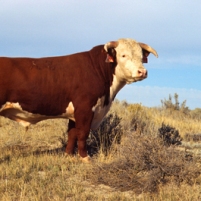US beef industry focuses on feed efficiency

Also the beef industry is focusing on higher feed efficiency, as feed prices are getting too expensive, according to a news item on cattlenetwork.com.
Feed storage, processing, additives and delivery that minimize waste and
maximize utilization are critical to improving efficiency, according to John
Dhuyvetter, area livestock specialist at North Dakota State
University’s North Central Research Extension Center in Minot. He believes
that large economic impacts also might be possible through genetic improvements
that make cattle more metabolically efficient in their use of feed. This means,
selecting cattle that eat less while gaining the same.
This technology
includes feed bunks with load-cell scales that continually weigh a feed tub
accessed by one animal at a time. The tub has a reader to identify the animal by
radio frequency ear tag and computerize the data accumulation to track what an
individual animal eats while in the pen on the feeding trial.
Residual
feed intake
Using the feed intake information to calculate a residual
feed intake (RFI) identifies metabolic efficiency differences among animals
independently of average daily gain and body size. RFI is defined as the
difference between what an animal actually consumed and what was expected based
on its growth and maintenance. “This information can be utilized in the
selection of bulls expected to sire calves with lower finishing feed costs and
daughters with lower feed maintenance requirements,” Dhuyvetter
says.
Investing in equipment
A number of bull testing and
marketing centers, including a couple of the largest test centers in the U.S.
and Canada, have invested in the equipment to be able to measure RFI and
evaluate bulls for feed efficiency. Additionally, several large seedstock
breeders are measuring RFI on some of their best breeding prospects, and more
and more land-grant universities are becoming set up to measure individual
efficiency in larger groups of animals, which will contribute to more meaningful
research.











